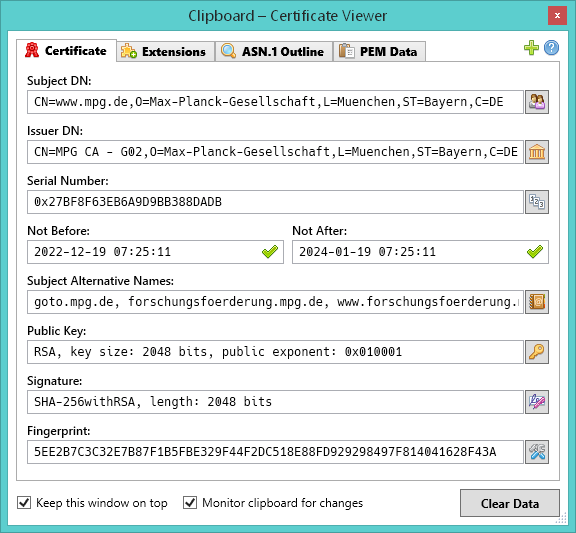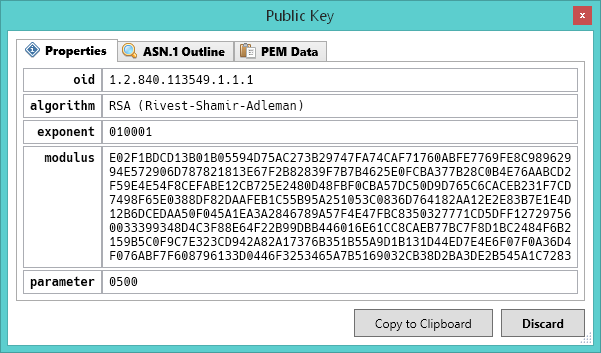Desciption:
Web-site:In order to display an X.509 certificate, simply drop a certificate file in the binary (DER) or the Base64-encoded (PEM) format onto the CertViewer window. Alternatively, you can copy a certificate in the PEM format to the clipboard. Last but not least, it is also possible to pass a certificate file to CertViewer via command-line parameter.
Note: By default, CertViewer continuously monitors the clipboard for "viewable" certificates in the PEM format.
https://deajl3ka.github.io/certviewer/
Screenshots:
https://github.com/dEajL3kA/certviewer/ ... ewer_1.png
https://github.com/dEajL3kA/certviewer/ ... ewer_2.png
https://github.com/dEajL3kA/certviewer/ ... ewer_3.png
https://github.com/dEajL3kA/certviewer/ ... ewer_4.png
https://github.com/dEajL3kA/certviewer/ ... ewer_5.png
https://github.com/dEajL3kA/certviewer/ ... ewer_6.png
https://github.com/dEajL3kA/certviewer/ ... ewer_7.png
https://github.com/dEajL3kA/certviewer/ ... ewer_8.png
https://github.com/dEajL3kA/certviewer/ ... ewer_9.png
Download page:
https://github.com/dEajL3kA/certviewer/releases
https://gitlab.com/deajl3ka1/CertViewer/-/releases
Mirror:
https://archive.org/download/cert-viewer.v1-2-7
https://www.dropbox.com/sh/a7jhq1iwuwjx ... tibta?dl=0
Prerequisites:
.NET Framework 4.7.2 or later is required. Already included in Windows 10 v1803 (April 2018 Update) or later, and all versions of Windows 11.
License:
OpenSource (MIT License)

